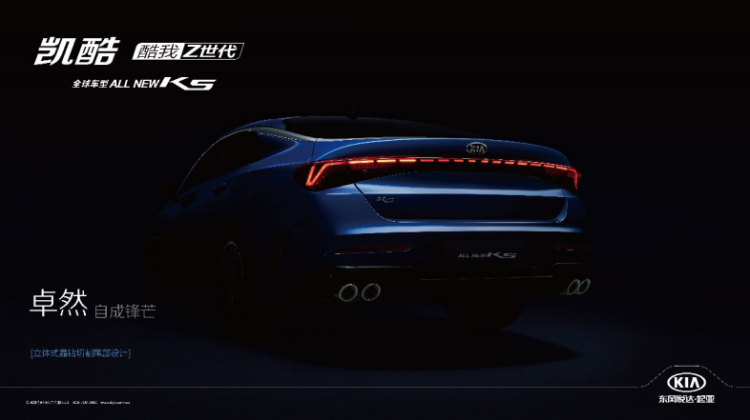It is obvious that electrification will become an important development direction of the future automobile industry. In this regard, we can see this huge blue ocean from the rising sales of new energy vehicles and the support of governments of various countries for the new energy power industry.

Behind the electrification of automotive products, it also means the transformation and upgrading of the auto parts industry. Transformation and upgrading are not difficult to say, but for an industrial chain with a sound industrial structure, transformation and upgrading also mean pains and industrial re-arrangement. From the perspective of capital, this also means the adequacy of capital and the regrouping of industrial advantages.
Compared with traditional internal combustion engine-powered models, the arrival of the electrification era has transformed the traditional power transmission system consisting of engines, gearboxes, and final reducers into a combination of electric motors, inverters, and battery packs. And this structural change allows the platform layout of the vehicle to be fully released, and also makes it very simple to improve the performance of the vehicle. Of course, the power structure of the vehicle is not the same.
Therefore, for the traditional automotive industry chain, the challenge brought by new energy and electrification lies in how to reconstruct the relationship between the components of this brand-new power system, especially the electric drive system. The answer given by Dana is to use the gear box with its own advantages as the standard platform architecture of the electric drive system, and through mergers and acquisitions, absorb advanced technology, and realize the solution integration of the entire electric drive system.

Yes, Dana’s development in the field of electric drive is a successful case of technology transformation driven by superior capital.
As an established supplier of transmission systems, Dana has become a leading company in transmission systems by virtue of its product advantages in drive axles and drive shafts over the past century. In the era of electrification, based on the original traditional system and combined with its accumulated experience in the design and development of precise and efficient transmission systems in the field of traditional transmission, Dana took the lead in launching the Dana electric gearbox, which provides low energy consumption for electric vehicles. Provides hardware support. Thus, the industrial upgrade from traditional internal combustion engine power to electric power has also been realized.
With this foundation, Dana started capital operations focusing on mergers and acquisitions.
In the second half of 2018, Dana established a joint venture partnership with Hydro-Québec. According to the joint venture agreement, Dana will invest 165 million Canadian dollars (about 860 million yuan) to become the major shareholder of TM4. Hydro-Québec will still hold a 45% stake in TM4.

TM4 has its unique technical advantages and industrial scale in electric motors, generators, power electronic equipment and control systems in the transportation market. After completing the holding of TM4, Dana also obtained TM4’s core technologies in permanent magnet motors, thermal management systems, coil windings, motors and inverter control algorithms, and has the ability to match with electric gearboxes, forming a A complete set of solutions for motor drive systems, engineering and manufacturing solutions. From the field of high-speed passenger vehicles, it has realized the ability to provide motor drive solutions in the end market.
Of course, the story is not over yet. The era of electrification is not simply an era of passenger cars, but also includes the field of commercial vehicles and even non-traditional road vehicles. Dana’s acquisition of TM4 has realized its electric drive axle solution capability in the high-speed and high-voltage field, and the acquisition of Italy’s SME Group in January 2019 has helped Dana complete its electrification transformation in the commercial vehicle field.

Compared with TM4, SME Group’s core strength lies in the design, development and production of low-voltage AC induction motors and reluctance synchronous motors, inverters and controllers widely used in off-highway electric vehicles, including material handling, agriculture, industrial construction and automated guided vehicles. In other words, the core business of the SME Group lies in the technology of low-voltage electric motors and inverters. In this way, Dana’s electrification product camp has expanded to the field of low-speed off-highway vehicles.
After the integration of TM4 and SME Group, Dana’s flagship Spicer series electric drive products have also formed a product line consisting of TM4 electric motors and inverters and SME low-voltage motors and inverters. The scope of application of a product has been extended to an output power of 250 kilowatts. Fully meet the needs of new energy in the field of passenger cars and engineering vehicles.
What else? Hybrid.

Different from pure electric power, the hybrid system needs to solve a power system coupling problem, so from the perspective of the traditional field, the structure of the hybrid system will be more complicated. In order to solve this problem, Dana completed the acquisition of Oerlikon’s transmission system business unit in 2018, and successfully obtained two brands of Oerlikon’s Graziano and Fairfield. This is followed by high-precision gears, planetary drives for wheeled and tracked vehicles and solutions for vehicle electrification. This transaction allowed Dana to rapidly expand its advantages in the field of hybrid vehicles.
So far, Dana has also possessed complete design, engineering and manufacturing capabilities of electric power and hybrid electric drive axles, covering the series of electrified products from passenger cars to commercial vehicles, from on-road products to off-road products. Obviously, this series of actions not only further strengthened Dana’s right to speak in the field of transmission, but also occupied a place in the era of electrification. It provides a good explanation for promoting industrial transformation with capital.




